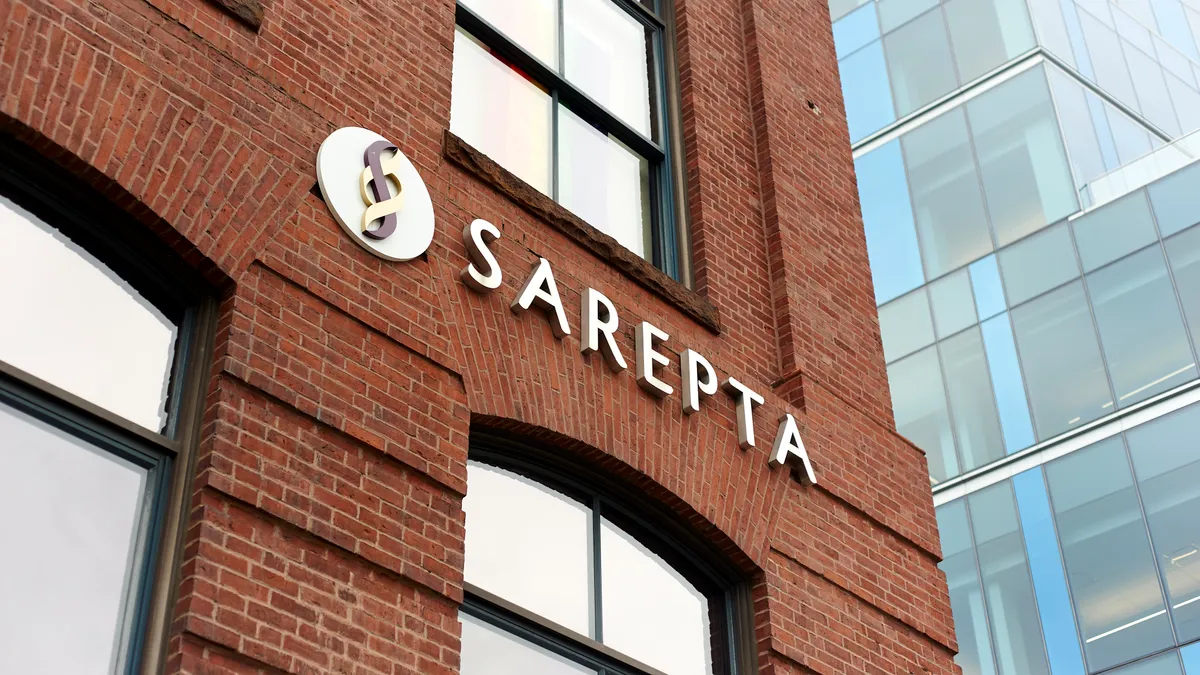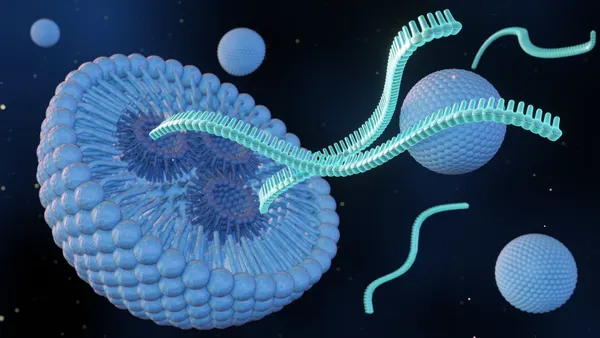Dive Brief:
- Sarepta Therapeutics’ yearly financial outlook and quarterly earnings, including sales of Elevidys, its gene therapy for Duchenne muscular dystrophy, have fallen well short of Wall Street expectations.
- Sarepta reported Wednesday afternoon that Elevidys sales totaled roughly $122 million between April and June, down from the previous quarter and about $20 million below consensus estimates. Overall product sales of about $361 million, and 2025 revenue projections of $2.9 billion to $3.1 billion, were also lower than analysts anticipated.
- Still, executives assured investors that sales should soon climb following the recent decision by the Food and Drug Administration to substantially expand use of Elevidys. The market opportunity ahead of Sarepta is “absolutely massive,” said Dallan Murray, the company’s executive vice president and chief customer officer on a conference call. Sarepta shares initially fell by double digits before rebounding Thursday morning.
Dive Insight:
Since Elevidys was launched last year, expectations have been high that it can break through some of the barriers that have prevented many gene therapies from becoming blockbuster products.
Sarepta’s latest quarterly results, then, took analysts by surprise. Though Elevidys’ sales trajectory has flattened since the spike that followed its initial approval in 2023, a dip well below analyst projections had some on a conference call Wednesday questioning whether demand isn’t as high as anticipated. Some also wondered if certain logistical “bottlenecks,” such as manufacturing constraints, are slowing the pace of infusions.
But executives waved off those concerns. On the call, CEO Doug Ingram noted it can take three to five months for patients to get cleared for treatment, staggering infusion rates. Over that time, prospective patients have to obtain insurance reimbursement and get tested for the presence of antibodies that can neutralize Elevidys’ effects.
Some infusions that were anticipated for the second quarter were rescheduled for afterward as well, and treatment centers have been trying to figure out who should receive Elevidys first.
“There is really no bottleneck at all,” Ingram said. “It’s a process that we’re dealing with.”
Sarepta management is predicting a significant uptick in use in the near future. Up until June, Elevidys was only available to certain boys with Duchenne who were 4 or 5 years old, capping its financial upside. The FDA that month loosened those restrictions, allowing all people at least 4 years of age and who have a specific mutation to get treatment. The company’s only near-term competitor, Pfizer, also stopped developing a rival gene therapy after the failure of a late-stage trial.
Murray, Sarepta’s chief customer officer, claimed treatment centers have since been dealing with “unprecedented demand” for Elevidys. More than 1,000 antibody testing kits, which the company views as a key indicator of future infusions, have been ordered. The “vast majority” of Duchenne patients are interested in therapy and “we only expect this to grow with time,” he said.
The company expects Elevidys sales to grow by one third between the second and third quarters, double over the following three months, and quickly accelerate once treatment centers have “fully adapt[ed] themselves to the broad label.” One reason why is, unlike most gene therapies, Elevidys’ multimillion-dollar price tag is paid upfront, not through installments tied to its performance, Murphy said.
Following the call, multiple analysts lowered Elevidys sales estimates for 2024, but defended the therapy’s future prospects. “We came away comfortable that … demand is very high” and “should support a major uptick in the near [and] medium term,” wrote RBC Capital Markets’ Brian Abrahams.
Sarepta has drawn “significant investor concern” by outlining “such a tight range” for seemingly achievable 2025 sales so far ahead of time, wrote Baird’s Brian Skorney. But “ultimately, we continue to think robust demand will win out here,” he added.















